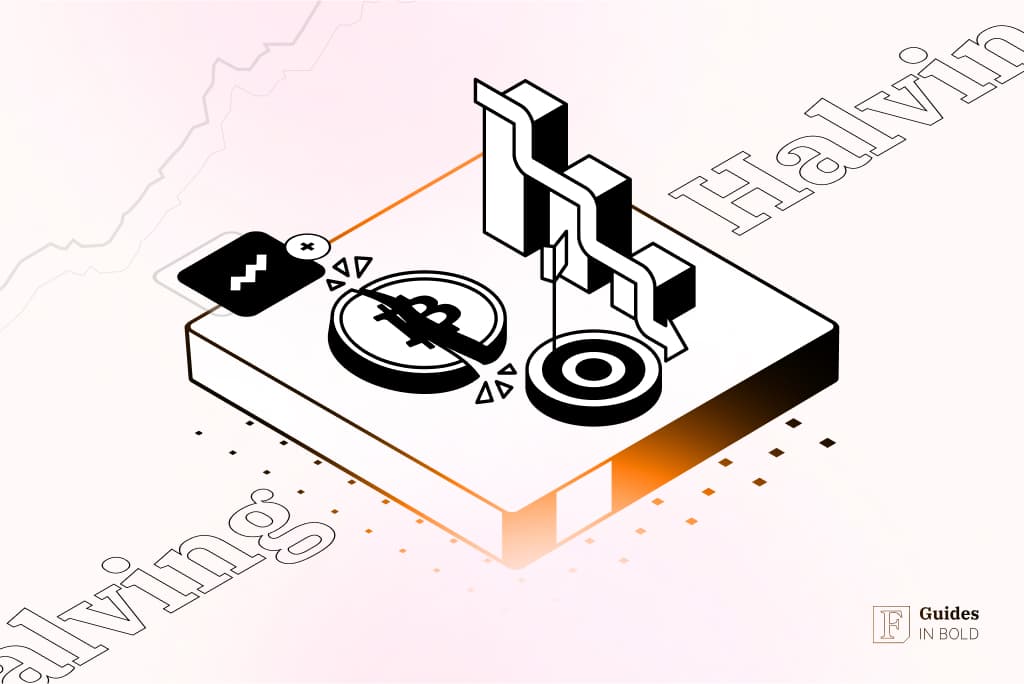Bitcoin (BTC) has seen a remarkable surge in value in 2024, reaching an all-time high surpassing $90,000. This surge is attributed to various factors including regulatory approvals and the launch of bitcoin ETFs, as well as increased market appetite for risk assets like stocks and cryptocurrencies due to anticipated interest rate cuts.
Best Crypto Exchange for Intermediate Traders and Investors
-
Invest in cryptocurrencies and 3,000+ other assets including stocks and precious metals.
-
0% commission on stocks - buy in bulk or just a fraction from as little as $10. Other fees apply. For more information, visit etoro.com/trading/fees.
-
Copy top-performing traders in real time, automatically.
-
eToro USA is registered with FINRA for securities trading.
What is Bitcoin halving?
Bitcoin halving refers to the reduction in the rate at which new bitcoins are produced. This process is fundamental to Bitcoin’s design and economic model. The blockchain, which is the underlying technology of Bitcoin, is maintained by miners—individuals or companies running specialized computers called application-specific integrated circuits (ASICs). These miners process Bitcoin transactions and add new blocks to the blockchain.
Each time a Bitcoin transaction is made, the sender pays a fee, and this fee goes to the miners. Additionally, miners are rewarded with newly minted bitcoins for successfully adding a new block to the blockchain. This reward is what undergoes halving.
Bitcoin halving dates history
The table below details bitcoin halving dates, as well as rewards before and after each halving, and the approximate Bitcoin price at the time of each event:
| Halving event | Date | Block reward before | Block reward after | Bitcoin price at halving |
| First | November 2012 | 50 BTC | 25 BTC | ~$12 |
| Second | July 2016 | 25 BTC | 12.5 BTC | ~$600 |
| Third | May 2020 | 12.5 BTC | 6.25 BTC | ~$8,000 |
| Fourth | April 2024 | 6.25 BTC | 3.125 BTC | ~$62,000 |
Bitcoin halving events have been pivotal moments in the BTC’s history, impacting both its supply dynamics and market valuation. As the Bitcoin network progresses, the block rewards awarded to miners undergo halving approximately every four years. This reduction in block rewards is a key aspect of Bitcoin’s design, ensuring its scarcity over time.
When was the Bitcoin halving in 2024?
The timing of Bitcoin halvings is not based on a specific date but rather on the number of blocks processed by the network. Halvings occur approximately every four years or after every 210,000 blocks. This schedule is predetermined and cannot be altered, ensuring the scarcity of Bitcoin over time.
That said, the fourth Bitcoin halving occurred on April 19, 2024. Following this event, the block reward decreased from 6.25 bitcoins to 3.125 bitcoins.
How many Bitcoin halvings are left?
What happens to BTC price after halving?
Historically, the price of Bitcoin has exhibited a clear upward trend following halving events. After the first halving in 2012, the price surged from around $12 to over $900 within a year. Similarly, following the second halving in 2016, the price climbed from approximately $600 to $2,500 within a year. The third halving in May 2020 saw the price around $8,000, which subsequently skyrocketed to over $40,000 within a year.
Bitcoin price today
As of January 2, 2025, Bitcoin price stands at $96,353. Bitcoin’s recent technical indicators suggest heightened downside risks, with significant corrections and divergence from the S&P 500. According to analysts, Bitcoin’s price is expected to fluctuate between $48,000 and $67,000 in the near future.
Reasons for price surge after halvings
There are two primary reasons behind the significant price increases observed after Bitcoin halvings:
- Supply reduction: The reduction in the block reward diminishes the supply of newly minted bitcoins entering the market. Miners, who often sell a portion of their rewards to cover expenses, contribute less to the supply after halving events, thus reducing sell pressure;
- Increased scarcity: The perception of Bitcoin’s value tends to increase due to its increased scarcity following halvings. As Bitcoin becomes scarcer, demand tends to rise, leading to higher prices. Additionally, there’s often a psychological aspect at play, known as FOMO (fear of missing out), where investors rush to buy Bitcoin anticipating further price increases based on historical patterns.
Disclaimer: The content on this site should not be considered investment advice. Investing is speculative. When investing, your capital is at risk.
FAQs about Bitcoin halving dates 2024
What is Bitcoin halving?
Bitcoin halving is an event where the reward for mining new Bitcoin blocks is halved, resulting in miners receiving 50% fewer Bitcoins for verifying transactions. This event occurs approximately every four years.
Why does Bitcoin halving happen?
Bitcoin halving is programmed into the Bitcoin protocol to control the supply of new Bitcoins and reduce the rate at which new coins are generated. It helps ensure that the total supply of Bitcoin is capped at 21 million coins.
When did the last Bitcoin halving occur?
The most recent Bitcoin halving happened on April 19, 2024.
How many Bitcoin halvings have occurred by now?
There have been four Bitcoin halving events, with the last occurring on April 19, 2024. The first occurred in November 2012, the second in July 2016, and the third in May 2020.
When is the next Bitcoin halving?
The next Bitcoin halving will occur at some point in 2028.





